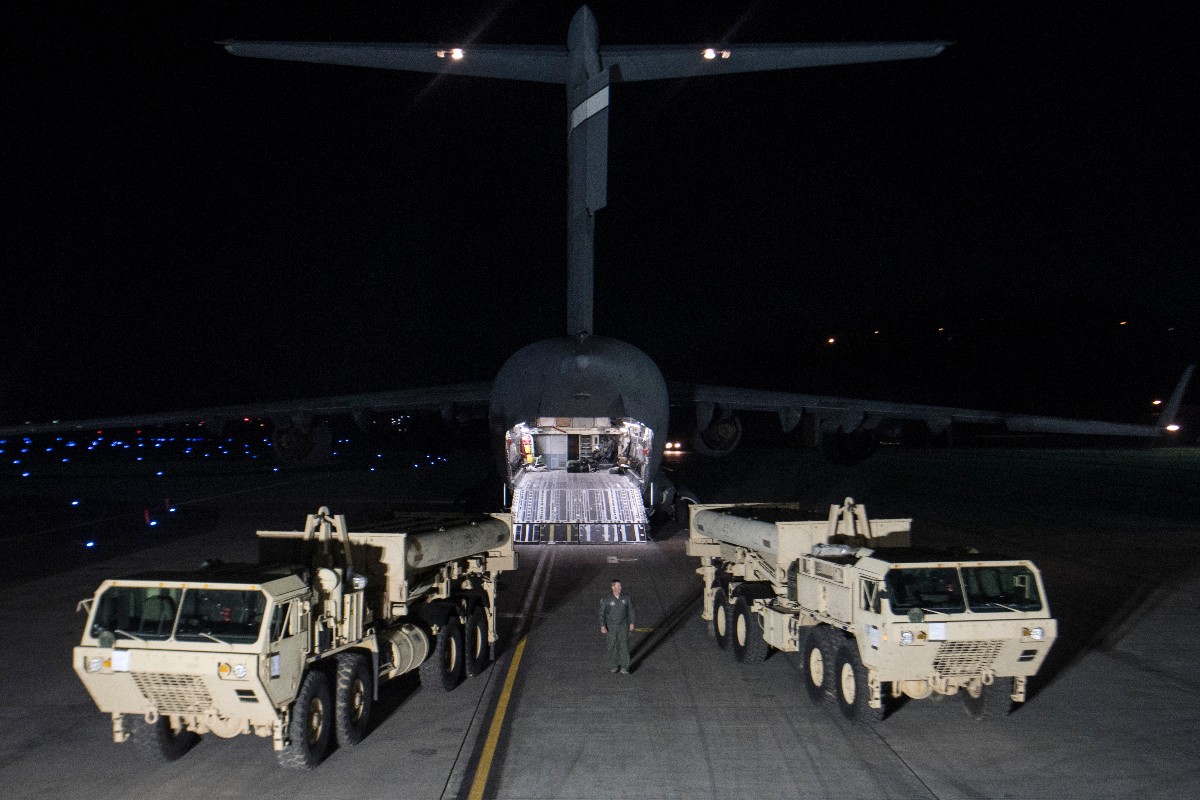 U.S. Department of Defense
U.S. Department of Defense
THAAD- A Necessary Measure?
The United States’ recent deployment of the Terminal High Altitude Area Defense (THAAD) system to South Korea has sparked controversy in the region. The system was installed in March, after an agreement to deploy under the Obama Administration. North Korea and China have expressed concerns regarding the system’s radar capabilities and possible infringement on their security.
THAAD is a US-designed missile defense system which intercepts short and medium-range ballistic missiles during the terminal stage of their flight path. The system can strike down missiles within a 150-250 km range, utilizes hit-to-kill technology, and contains an advanced radar system. The purpose of the deployment is to protect South Korea from a potential North Korean missile launch, regardless of the missile’s nuclear capability. The system is partially operational and will become fully operational later in the year.
While the North Koreans do not yet have the capacity to manufacture ICBMs, experts predict that it could be attainable in approximately five years. The unpredictability of North Korea’s technological advancements warrants the deployment of the THAAD system. The US government has underestimated the North Korean’s technological capabilities before and cannot afford to make this mistake again.
The negative effects of the implementation of the THAAD system have been notable. North Korea, in reaction to the deployment of the system, has continued to escalate its missile testing. While this behavior is characteristic of their aggressive rhetoric since 2008-2009, the frequency of testing is unprecedented. A North Korean foreign ministry spokesman threatened that the country would increase the pace of its nuclear weapons program as self-defense against the United States’ provocative actions. This year alone, North Korea has conducted nine missile tests. Furthermore, the last missile tested by North Korea on May 28th landed within Japan’s exclusive economic zone, which shows its increasing disregard for international norms.
Due to the unique nature of North Korea’s recent actions, Kim Jong-un’s efforts to deter threats to his regime have escalated considerably. North Korea’s new strategy is to deteriorate the US-South Korean alliance and to instill uncertainty that the US would fulfill its promise to defend South Korea from an attack. In undermining US-South Korean relations, North Korea intends to assert its dominance on the Korean peninsula and impede the flow of American support in case of conflict.
The system has also produced controversy in South Korea, spurring domestic divisions earlier this month as South Korea was embroiled in a presidential election. The newly elected president, progressive party candidate President Moon Jae-in, has advocated for a more diplomatic approach to the conflict with the resumption of talks between North and South Korea. He has also been a proponent of the so-called “Sunshine Policy,” which advocates for a relaxation of the containment strategy towards North Korea and the eventual de-nuclearization of the country.
However, President Moon has criticized the US deployment of the system, both before he was elected President and more recently following the discovery of an additional 3 THAAD systems. As a candidate, Moon called for a complete review of the THAAD system and expressed outrage regarding the notion that South Korea would pay for the system instead of the US.
China, a longtime ally of North Korea, has also reacted negatively towards the installation of the THAAD system. The Chinese government has closed nearly all of the stores of the brand Lotte after the company gave the South Korean government the rights to house the THAAD system on a golf course. In addition, the Chinese government has complained that the THAAD’s radar system could be employed to spy on China.
In an ideal scenario, THAAD would not be necessary. While the possibility of a North Korean missile launch is still present, the THAAD system provides a reassurance for South Korea and a deterrence against North Korea. Once the Korean peninsula is free of nuclear weapons, the system should be removed. In addition, the US can use the THAAD system as a bargaining chip. The removal of the system could be used as leverage to encourage the North Korean government to engage in negotiations or further pressure China to utilize its leverage on North Korea.
However, the US must weigh whether the THAAD system is worth the potential fractures to the crucial US-South Korean alliance. The United States must be more transparent with South Korea—a key ally in Asia—to work to towards the common goal of threat reduction on the Korean peninsula. This goal will be difficult to achieve if existing disparities in intelligence and defense strategy convolute the larger objective.





